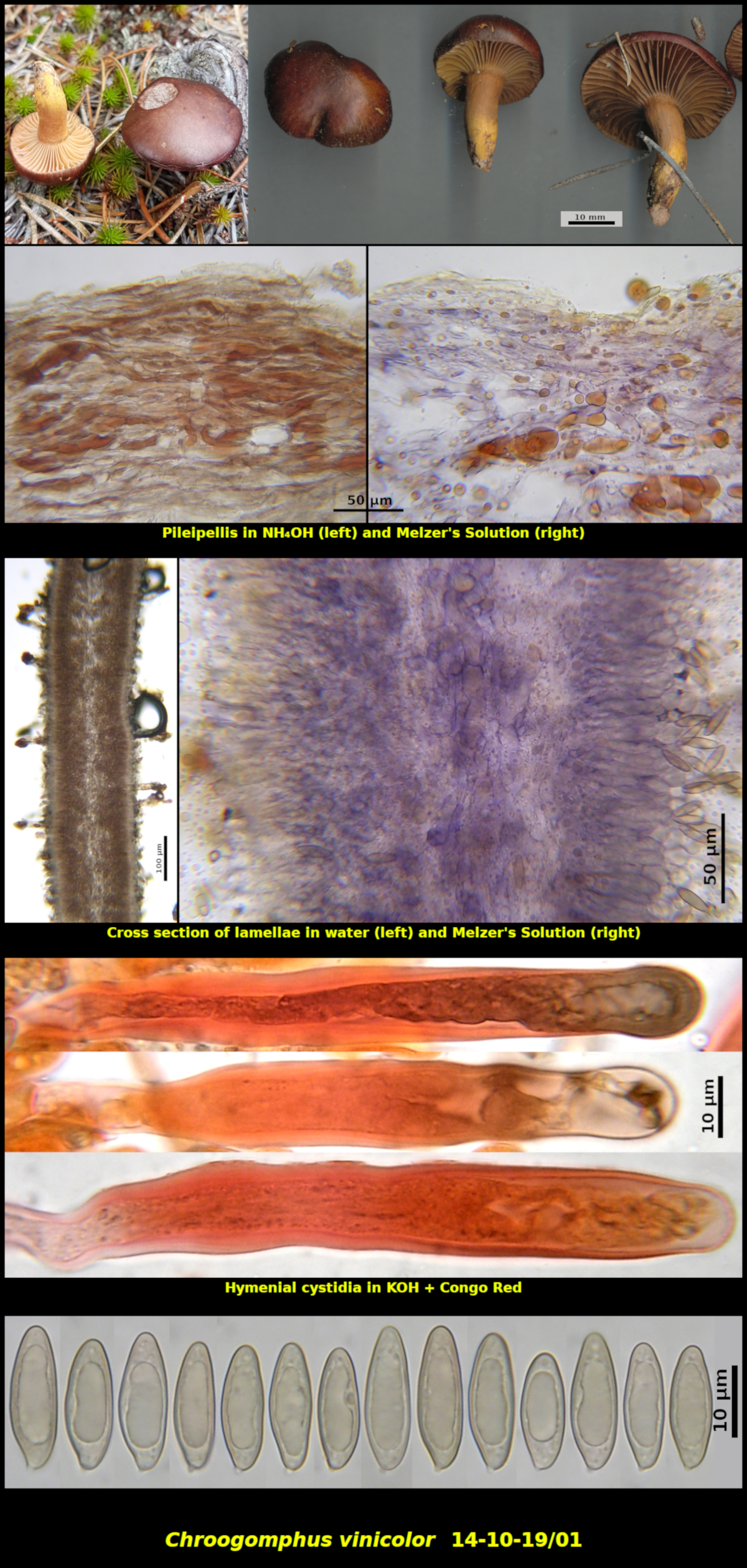Fleshy Fungi of New Brunswick >>
Chroogomphus vinicolor
Chroogomphus vinicolor (Peck) O.K. Miller

Gregarious (several) in soil at edge of woods, associated with Pinus banksiana, E of Utopia, New Brunswick (14-10-19/01).
Basidiospores deep olive brown (HSV35:30:30-40) in spore print, 14.4-20.3 x 5.8-7.1 μm, Q = 2.15-3.17 (average[32]: 17.9 x 6.3 μm, Q = 2.84). Basidia 4-spored, without a basal clamp. Hymenial cystidia numerous and conspicuous on both edges and sides of the lamellae, cylindrical, often slightly swollen at the apex, thick-walled in the central parts but thinner at the apex, covered with a brown resinous or encrusting material that entraps basidiospores coming in contact with it, 84-129 x 13.2-16.3 μm. Lamellar trama loosely parallel but easily disassociating and causing the two side of the lamella to separate when preparing thin sections, composed of unclamped hyphae encrusted with small plate-like pigment particles, more densely packed in the subhymenium, amyloid in Melzer’s Solution. Pileipellis a fairly thick cutis of hyphae containing a dark intracellular pigment, overlain by a thin hyaline semi-gelatinous layer 1-2 cells deep (best viewed in Melzer’s Solution), with pigment released as a gummy substance in Melzer’s Solution. Pileus trama subparallel to interwoven, strongly amyloid.
The wine-red pileus, strongly decurrent olive-coloured gills and yellow stipe make C. vinicolor unmistakable in the field. The oversized cystidia and basidiospores, as well as its nearly black spore print, add to its distinctiveness. The thick-walled cystidia and amyloid tissues are also diagnostic.
The dark colours of the pileus and lamellae is due to a brown intracellular pigment that is released as an orange gummy exudate in Melzer's Solution and in Windex. In fact, Melzer's Solution would be an ideal mounting medium for most parts of this mushroom except that the gummy exudate tends to obscure the view. As viewed in KOH the cystidia appear to be smooth, but in a weak ammonium hydroxide (NH4OH) solution they appear to have a covering of brown material. In Melzer's Solution this brown material becomes gummy. This material must be sticky because the cystidia often have several basidiospores stuck to them, as seen in the water mount of a lamella in the picture here.
Photograph: D. Malloch (14-10-19/01).